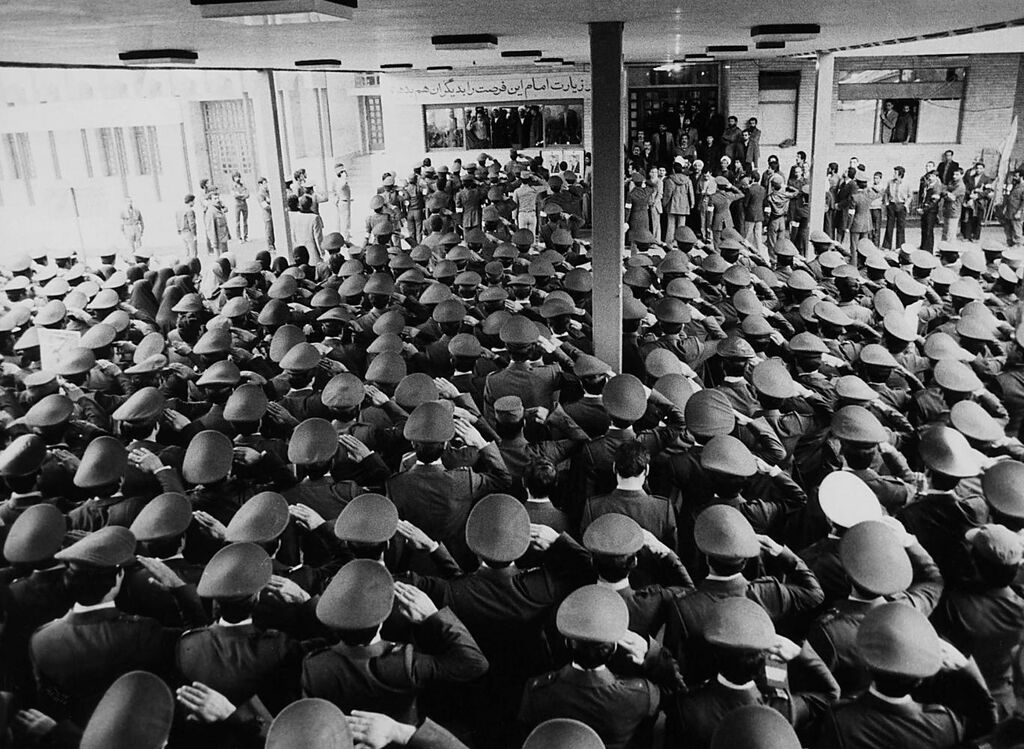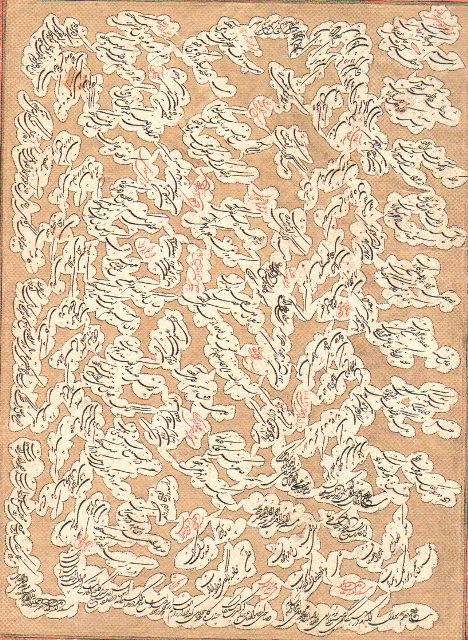Self-portrait of Kamal-ol-Molk, watercolor, 1336 AH (circa 1917 CE)
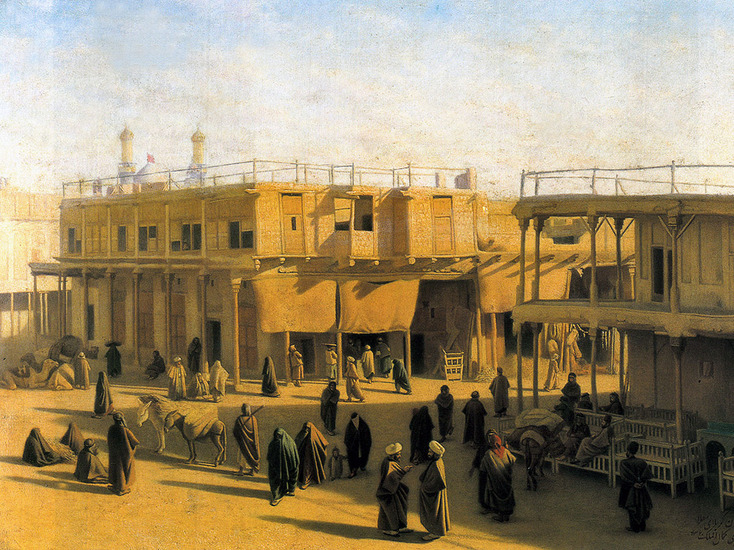
Kamal-ol-Molk: The Enduring Innovator of a New Path in the History of Iranian Painting
Kamal-ol-Molk: The Enduring Innovator of a New Path in the History of Iranian Painting
-
Mohammad Ghaffari, known as Kamal-ol-Molk, was born around 1226 AH (circa 1847 CE) in Kashan, Iran. He grew up in a family that produced several other notable painters of the Qajar era, including Abulhassan Ghaffari, Sania-ol-Molk Ghaffari, Abulhassan Sales (Yahya Khan Ghaffari), Alireza Ghaffari, Masoud Ghaffari, and Abutorab Ghaffari, among others. Mohammad completed his primary education in Kashan and, as a teenager, moved to Tehran to study at Dar al-Fonoon School, where he pursued Persian and French languages, as well as subjects such as history and painting. Alongside his general studies, he learned the foundations of painting under the school’s painting instructor. At the end of his third year, Naser al-Din Shah Qajar noticed a portrait that the young Mohammad had drawn of the school director during a visit to Dar al-Fonoon. This portrait impressed the Shah, who subsequently encouraged Mohammad and summoned him to the royal court. Shortly thereafter, he was awarded the title of Naqqash-Bashi (Chief Court Painter) and the position of special attendant. From this period until the end of the Qajar dynasty, Mohammad Ghaffari served as a court painter. In 1310 AH (1892 CE), Naser al-Din Shah officially granted him the title Kamal-ol-Molk. Using his signature as Naqqash-Bashi, Kamal-ol-Molk created nearly 170 works, of which only a few survive today.
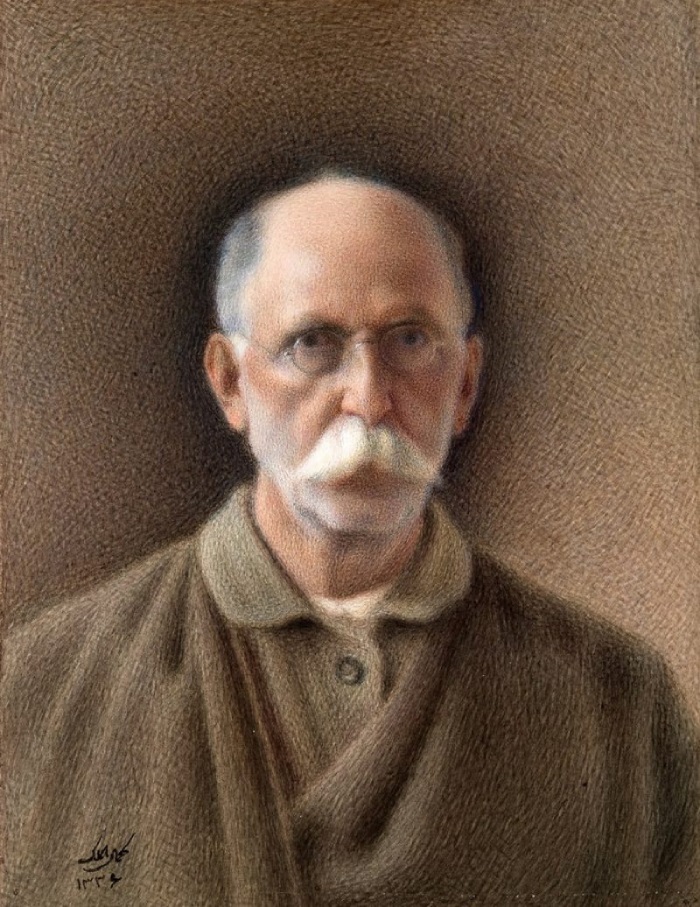
The first painting signed by Kamal-ol-Molk is the famous work “Hall of Mirrors”, which depicts Naser al-Din Shah in the center of the Hall of Mirrors at Golestan Palace. After the assassination of Naser al-Din Shah, during the first year of Mozaffar al-Din Shah’s reign (1314 AH / 1896 CE), Kamal-ol-Molk traveled to Europe, spending over three years in Florence, Rome, and Paris. During his time in Europe, he devoted much of his study to the works of the great masters of the era, including Michelangelo, Raphael, Titian, Rembrandt, and others, striving to emulate their techniques. His stay in Paris, around 1900 CE, coincided with the end of Impressionism and the emergence of new art movements in Europe. However, Kamal-ol-Molk largely ignored these contemporary movements, focusing instead on the works of the old masters.
The European journey had a profound impact, particularly on his technique. After returning to Iran around 1318 AH (circa 1900 CE), “Over a period of approximately three years, he produced several commissioned works for Mozaffar al-Din Shah. However, many of these commissions did not align with his personal taste, which caused some tension between the artist and the Shah. In 1321 AH (circa 1903 CE), Kamal-ol-Molk traveled to Iraq to visit holy cities, and during his stay in Karbala, he created some of his finest paintings, including “Karbala Square”, “Baghdadi Jewish Fortune Teller”, “Baghdadi Goldsmith and His Apprentice”, “Sleeping Arab”, and others. He returned to Iran in 1323 AH (circa 1905 CE), and the Shah sought to reconcile with him. Despite this, Kamal-ol-Molk often cited his hand tremor as a reason to decline commissions. His return to Iran coincided with the Constitutional Revolution. Being aware of the movement’s potential to improve the people’s conditions, Kamal-ol-Molk indirectly supported the revolution by translating works of thinkers such as Jean-Jacques Rousseau and other French advocates of freedom.
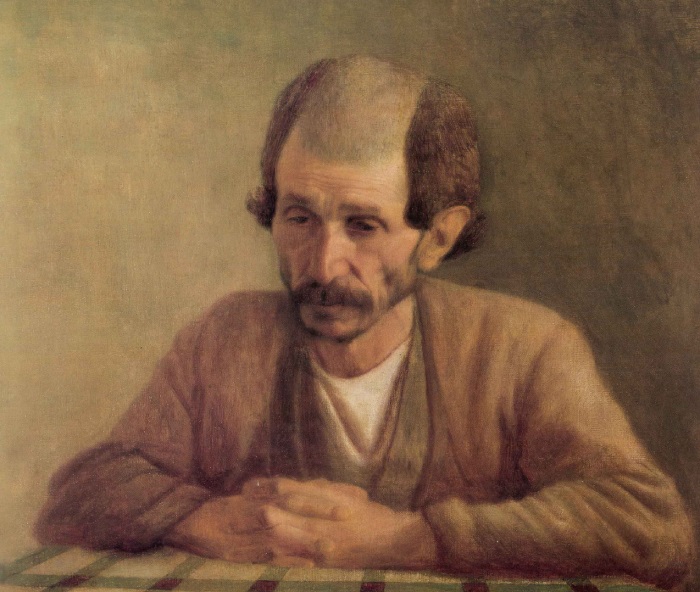
Mashhadi Naser, oil on canvas, 1303 AH (circa 1924 CE)
In 1329 AH (circa 1950 CE), on the recommendation of Kamal-ol-Molk and under his supervision, the first art school in Iran was established in Tehran, inspired by European art academies. This school trained numerous painters and sculptors who, over the last half-century, have continued to follow the path of Kamal-ol-Molk. Before and during Kamal-ol-Molk’s time, other notable painters such as Sani-ol-Molk, Mahmoud Khan (Malek-o-Shoara Saba), along a few other active painters of the time. However, today, the reputation and recognition of none of these artists can be compared with that of Kamal-ol-Molk. The prestige and social success of this renowned painter must be understood in the context of the social and cultural conditions of his era. On one hand, the society of that period was implicitly seeking significant social and cultural transformation, and Qajar-era painting, rooted in Iranian miniature traditions, had reached its limits in content and form. On the other hand, the cultural influence of the West, which had begun in the Safavid period, had reached a stage where it had the potential to significantly shape the artistic vision and sensibilities of many artists of that time. Through his work, Kamal-ol-Molk effectively addressed the intellectual and artistic needs of society, thereby laying the foundation for his enduring success. Other factors, such as his personal character, lifestyle, partial blindness, and technical skill, also contributed, cementing his reputation as a legendary figure in Iranian painting. In other words, Kamal-ol-Molk represents both the culmination of traditional Iranian art and the serious beginning of a new artistic movement heavily influenced by Western art. While Western influence had existed previously, it had typically blended into traditional Iranian painting, whereas in Kamal-ol-Molk’s works, the conventions of traditional Iranian painting were gradually supplanted by those of classical European art.
Kamal-ol-Molk’s most significant artistic contribution, marking a turning point in the history of Iranian painting, was his precise and meticulous observation of nature. Traditional Iranian painting had always progressed in an anti-naturalistic space, largely due to its mystical and symbolic content. However, after studying the nature-oriented efforts of painters before him, Kamal-ol-Molk decided to abandon the symbolic approach to nature entirely, evolving from an early-stage naturalism to a mature naturalism, occasionally approaching realism in his works.
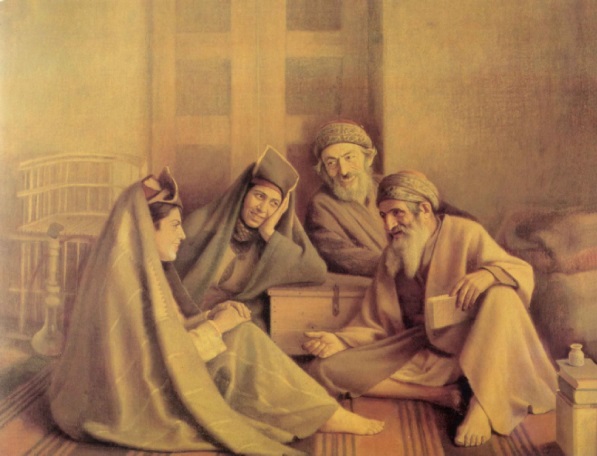
Baghdadi Fortune Teller, oil on canvas, 1277 AH (circa 1898 CE)
Classification of Kamal-ol-Molk’s Works
Kamal-ol-Molk’s artworks can be divided into three main periods based on different stages of his life: works created before his European journey, works produced during his time in Europe, and artworks Created Following His Return from Europe.
Here is a brief overview of each period:
A) Works Before the European Journey
Before receiving the title of Naqqash-Bashi (Chief Court Painter), Kamal-ol-Molk worked at the Qajar court for four years. The earliest known work from this period is the painting “Government Camp” (1299 AH / circa 1882 CE), signed using the title Naqqash-Bashi. Between this time and the creation of the “Hall of Mirrors”, signed as Kamal-ol-Molk, he produced numerous works primarily depicting Qajar court life, mostly landscapes with few human figures. When people do appear, they are often very small and integrated into the natural setting. The technique of these early works is generally hasty and somewhat weak. However, in the later works of this period, Kamal-ol-Molk approaches the subject more closely, selects better compositions, and demonstrates a more mature technique, allowing him to depict nature with greater precision. This quality is evident in works such as: “Twin Waterfalls”, “Golestan Palace Building”, “Karimkhani Retreat”, “Golestan Palace Garden”, “View of Imamieh Village”, “Baghshah Landscape”, “View of Zanusi Valley”
In the later years of this phase, Kamal-ol-Molk began to focus more on human figures, often depicting multiple people in a single painting. Examples include: “Uncle Sadeq Shirazi’s Likeness”, “The Palace Caretaker Selling Old Clothes to Jews”, “Hunters and Two Beggar Girls”. In these later works, the figures, like other elements of the painting, lack movement, vitality, or logical interaction. Yet technically, the works are stronger and more established than the earlier ones. Kamal-ol-Molk had a greater technical capability to capture the appearance of nature. Some late landscapes from this period, such as Golestan Palace scenes, Twin Waterfalls, Zanusi Valley, and Baghshah landscapes, demonstrate outstanding aesthetic qualities and transcend the simple depiction of nature. The likely last work signed as Naqqash-Bashi is “The Fortune Teller (Rammal)”, featuring Kamal-ol-Molk’s most sophisticated composition of human figures up to that time, demonstrating his mastery of color and precise depiction of nature. The figures are well-constructed and maintain logical relationships with one another, marking a significant technical and artistic achievement in his early career.
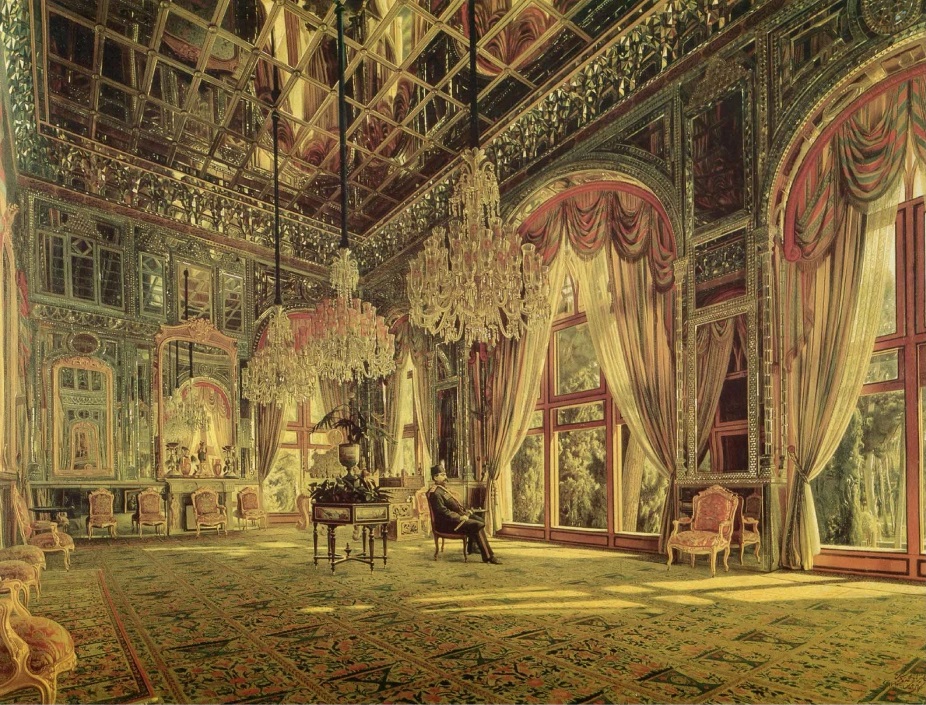
Hall of Mirrors, oil on canvas, 1274 AH (circa 1896 CE)
“Hall of Mirrors” is one of Kamal-ol-Molk’s most famous works, though not necessarily his best. In this painting, despite the careful rendering of reflections on the ceiling and wall mirrors, the composition’s perspective is weak.. Nevertheless, the work exhibits striking aesthetic qualities, largely technical in nature, which elicit admiration and fascination from viewers. After “Hall of Mirrors” and before his European journey, Kamal-ol-Molk likely created other works, such as “An Egyptian Man”.
B) Works Created During the European Journey
During this period, Kamal-ol-Molk engaged in careful and faithful copying of the masterpieces of European painters. Some experts believe that the works he produced during this time, based on artists like Rembrandt and others, differ very little from the originals, except that the colors are purer and more refined. It seems that, apart from these copies, Kamal-ol-Molk did not create original works during this phase.
C) Works Created After Returning from Europe
The most significant work Kamal-ol-Molk painted immediately after returning from Europe is “The Goldsmith and His Apprentice”. “Through this painting, he demonstrates the cohesion, skill, and mastery gained during his European training. The influence of Rembrandt’s lighting techniques is evident, yet the humble goldsmith shop has been transformed into a clean, elegant, and luxurious space.
Following this, Kamal-ol-Molk traveled to Karbala, creating two major works that exemplify the height of his artistic mastery and bring his style closer to realism. One of these is “The Jewish Fortune Teller”, which lacks the weaknesses of his earlier works and contains qualities not found in his later pieces. In contrast to the Goldsmith and His Apprentice, the lighting in this work is natural and harmonious, complementing the figures and effectively conveying the affluent lifestyle of the mother and daughter, as well as the humor and liveliness of the fortune teller and her assistant.
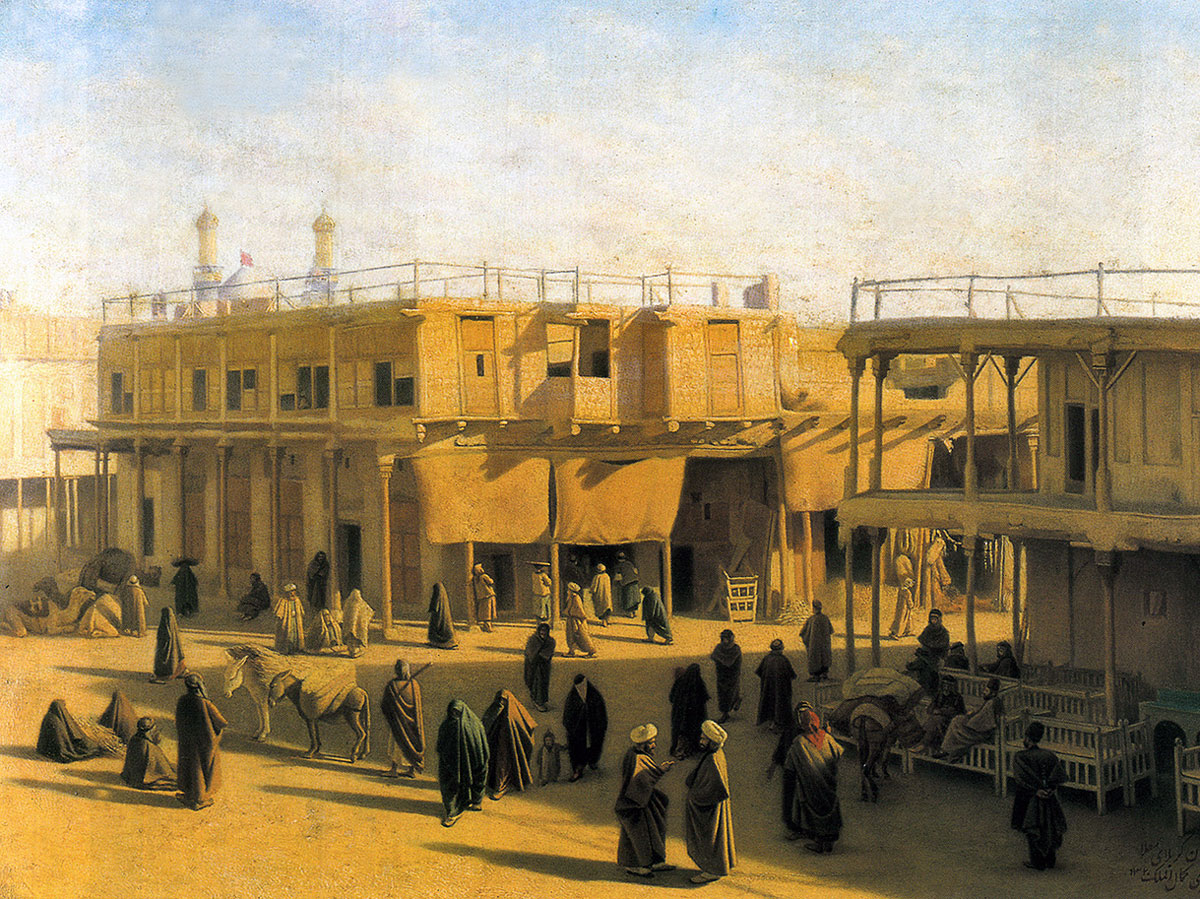
Karbala Square, oil on canvas, 1281 AH (circa 1903 CE)
Another significant work that Kamal-ol-Molk created during his trip to Karbala is known as “View of the Holy Karbala Square”. This painting is an exception among Kamal-ol-Molk’s landscapes, as it is the only work in which he focuses on the cityscape, and the people depicted are the most active figures seen in his landscape paintings. Although it seems that the figures are frozen in time for a while , unlike his other works, the subject here is the ordinary life of the city’s inhabitants. In this painting, the artist still maintains a distance from the people, observing them from the balcony of a building above, and has not fully entered the dynamic space of life below. After returning from Karbala, until the end of his tenure at the Sanaye Mostazrafeh School, Kamal-ol-Molk created other works, including: Two self-portraits, Portraits of Sardar Asad, Sani-ol-Dowleh, and Mohammad Hasan Foroughi, Four landscapes, and one still life. Among the four landscapes, “The Rural Cottage” is particularly notable. The beauty in this work is vivid and realistic, as if the painter is inside nature, conveying the gentle sound of a stream and the calmness under the shade of the trees to the viewer.
During his lifetime, Kamal-ol-Molk had wished to be buried in his private estate in Hoseinabad, but after his death in 1319 AH (circa 1940 CE), he was interred in Neyshabur, beside the renowned Iranian poet and mystic Sheikh Farid al-Din Attar. This led to the creation of a fitting mausoleum for this masterful painter. On his gravestone is inscribed the enduring phrase: “He who is everlasting and eternal is God.”
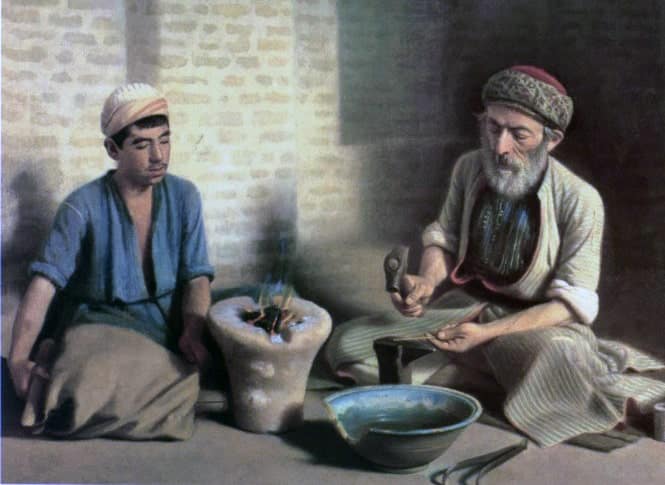
Baghdadi Goldsmith, oil on canvas, 1280 AH (circa 1902 CE)
Among the most important paintings by Kamal-ol-Molk are:
Karbala Square, Hall of Mirrors, Baghdadi Goldsmith, Baghdadi Fortune Teller, View of Shahrestanak Mansion, View of Shahrestanak Spring, View of Kelardasht, Sahibqaranieh Bathhouse, Saltanatabad Palace Bathhouse, Portrait of Seyyed Nasrollah Taghavi, Portrait of Vosough-ol-Dowleh, Baghshah Garden in Tehran, Mashhadi Naser, The Fortune Teller (Rammal), Self-Portrait, Royal Camp in Baladeh Noor, Captured Bird, View of Lar, Landscape, Imperial Camp, and others.
| Name | Kamal-ol-Molk: The Enduring Innovator of a New Path in the History of Iranian Painting |
| Country | Iran |
| Type | Painting,Painting |
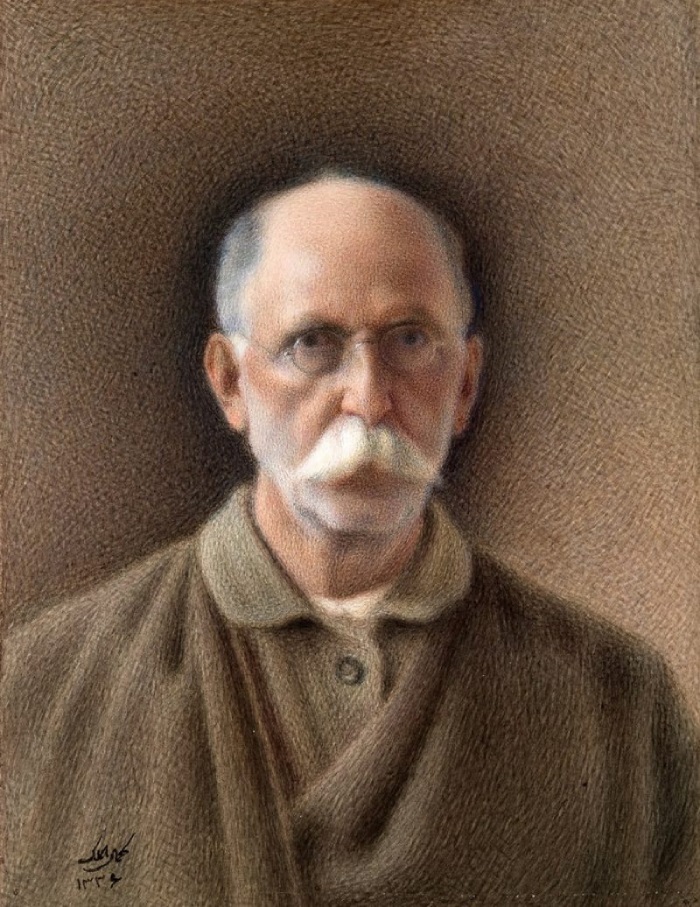
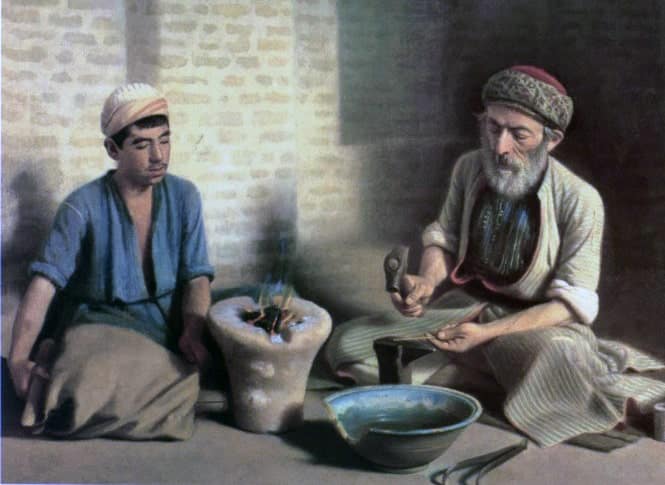
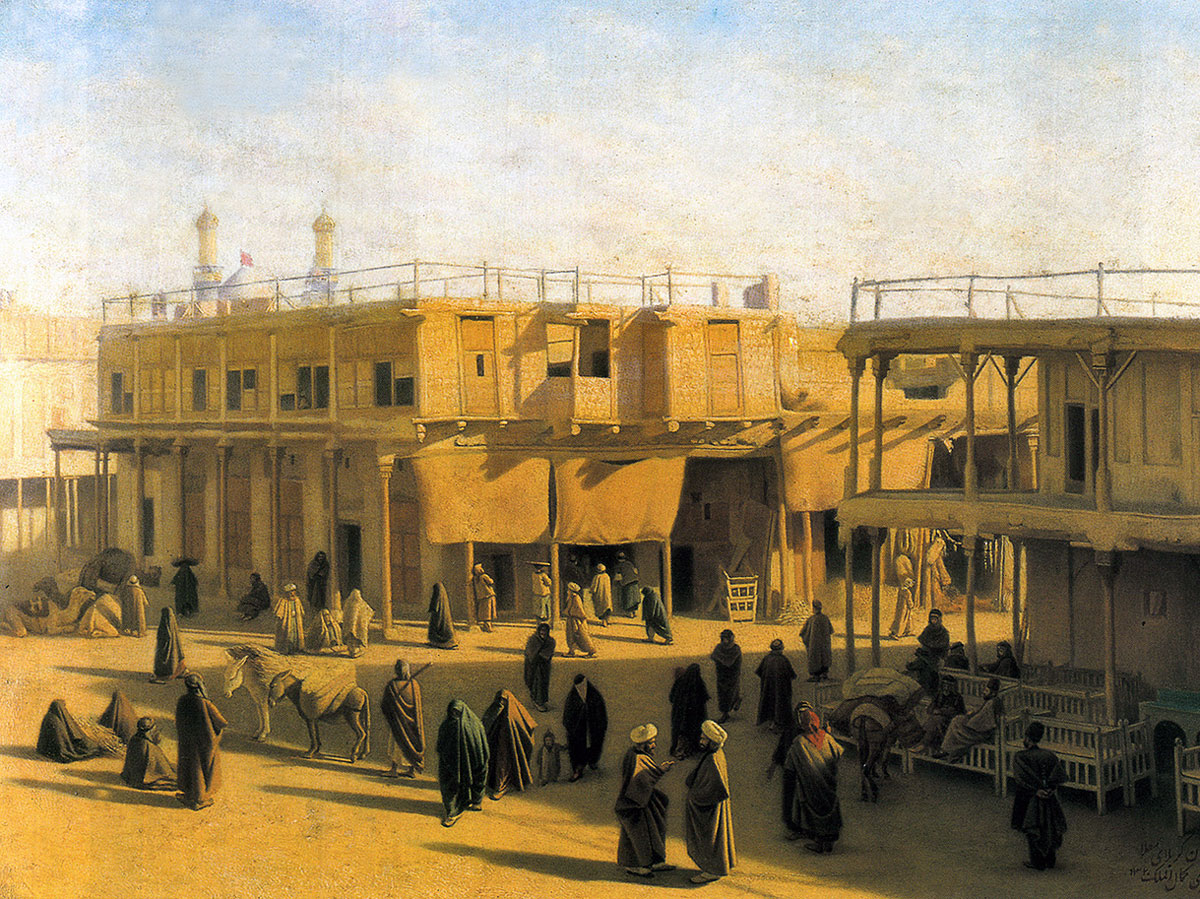
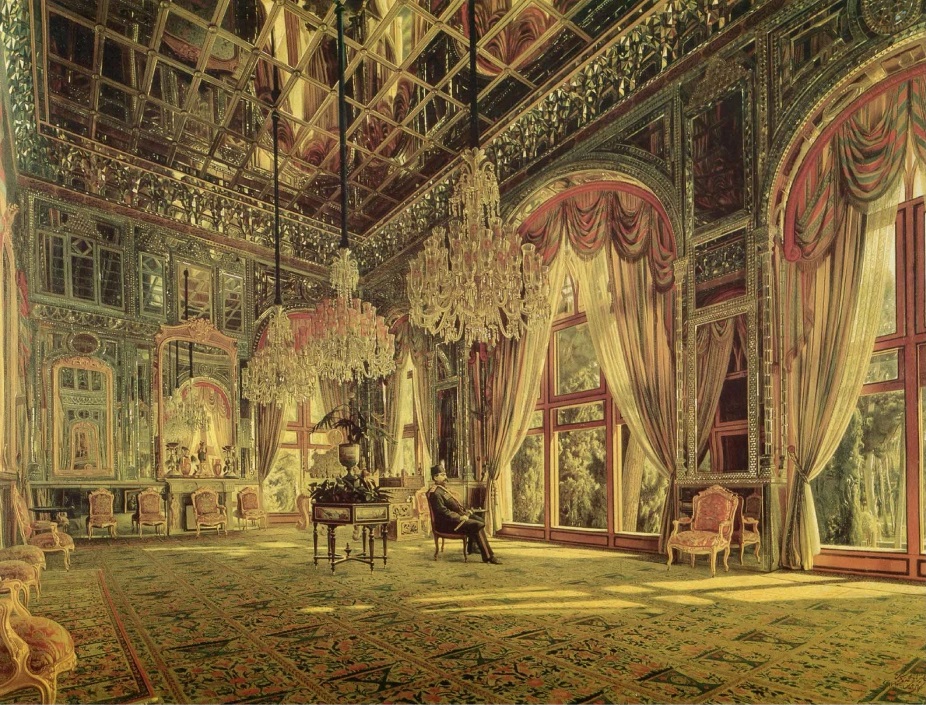
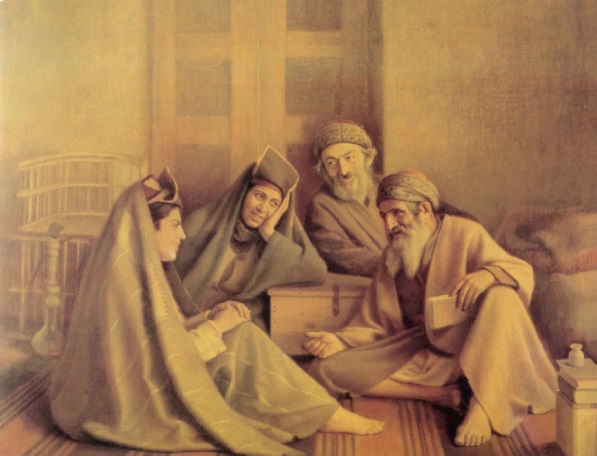
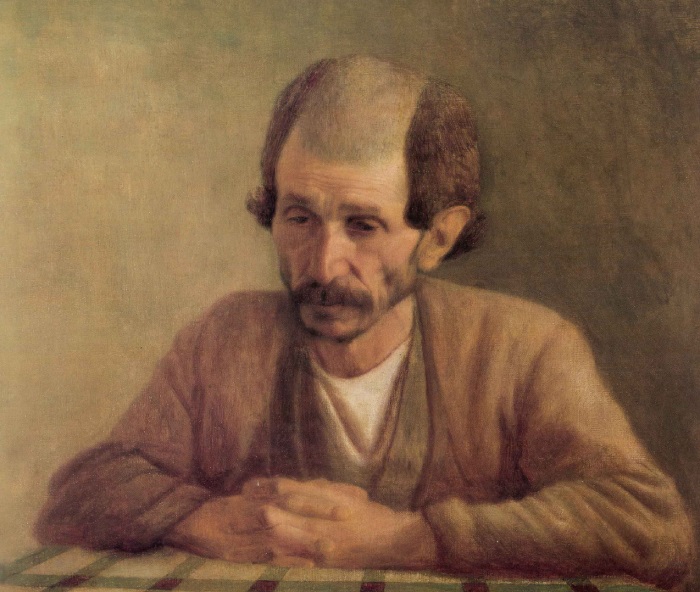






Choose blindless
Red blindless Green blindless Blue blindless Red hard to see Green hard to see Blue hard to see Monochrome Special MonochromeFont size change:
Change word spacing:
Change line height:
Change mouse type:
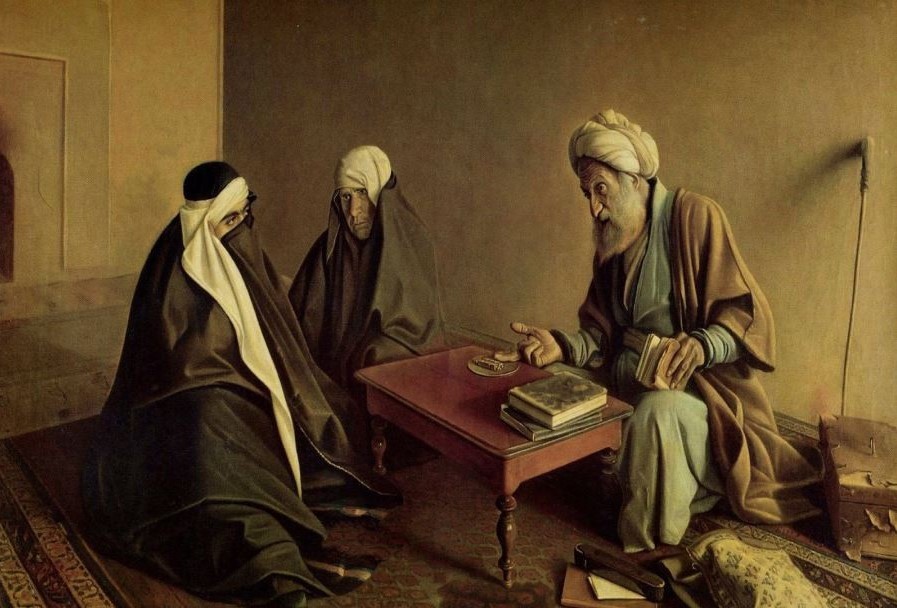
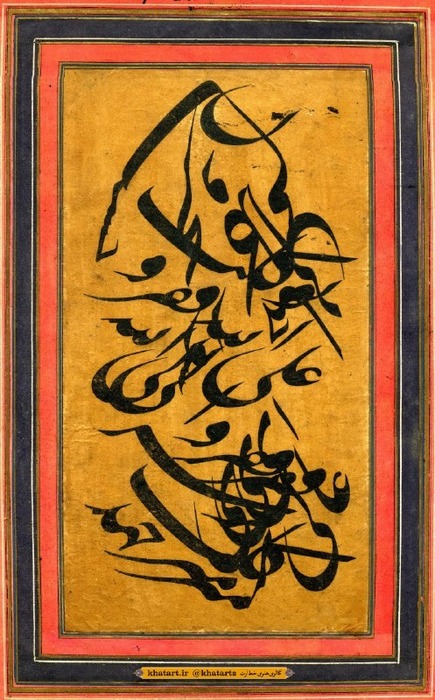
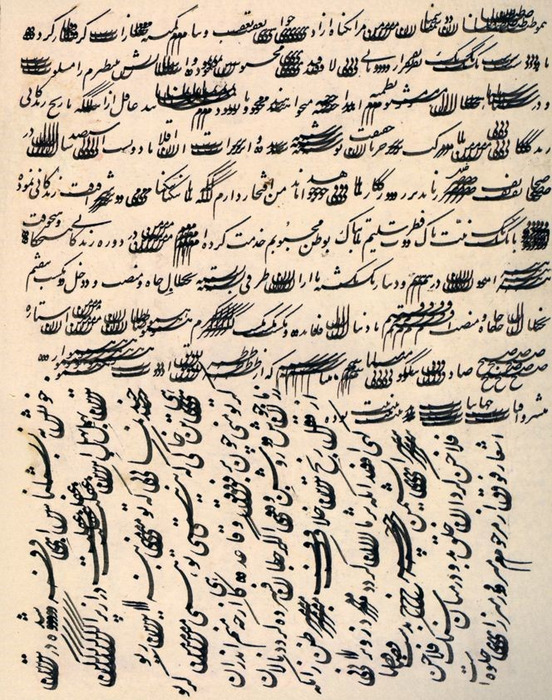

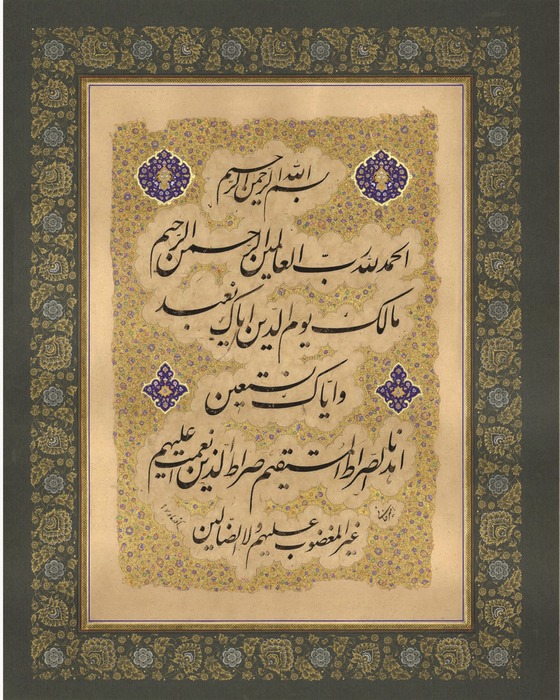
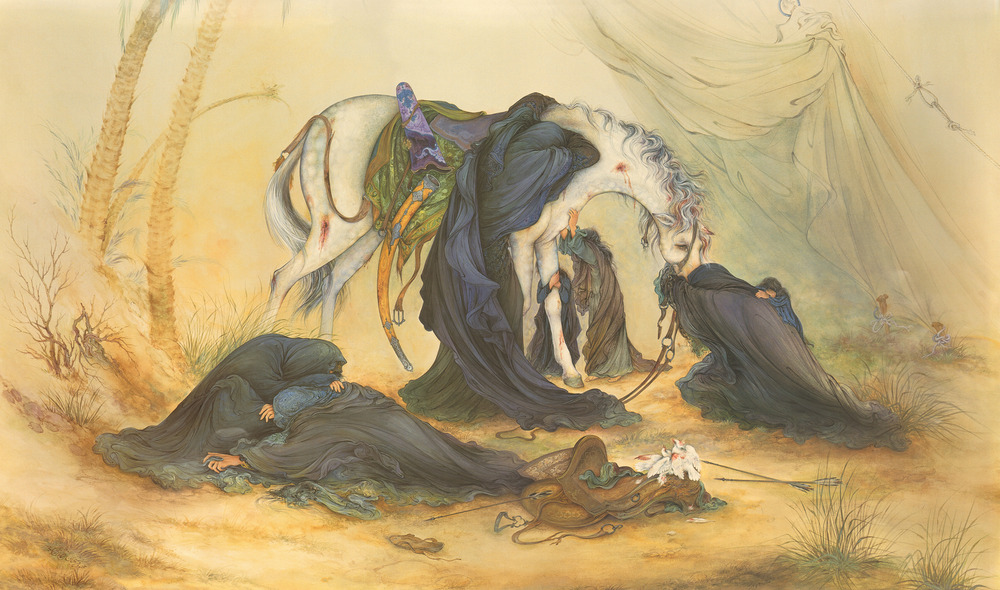
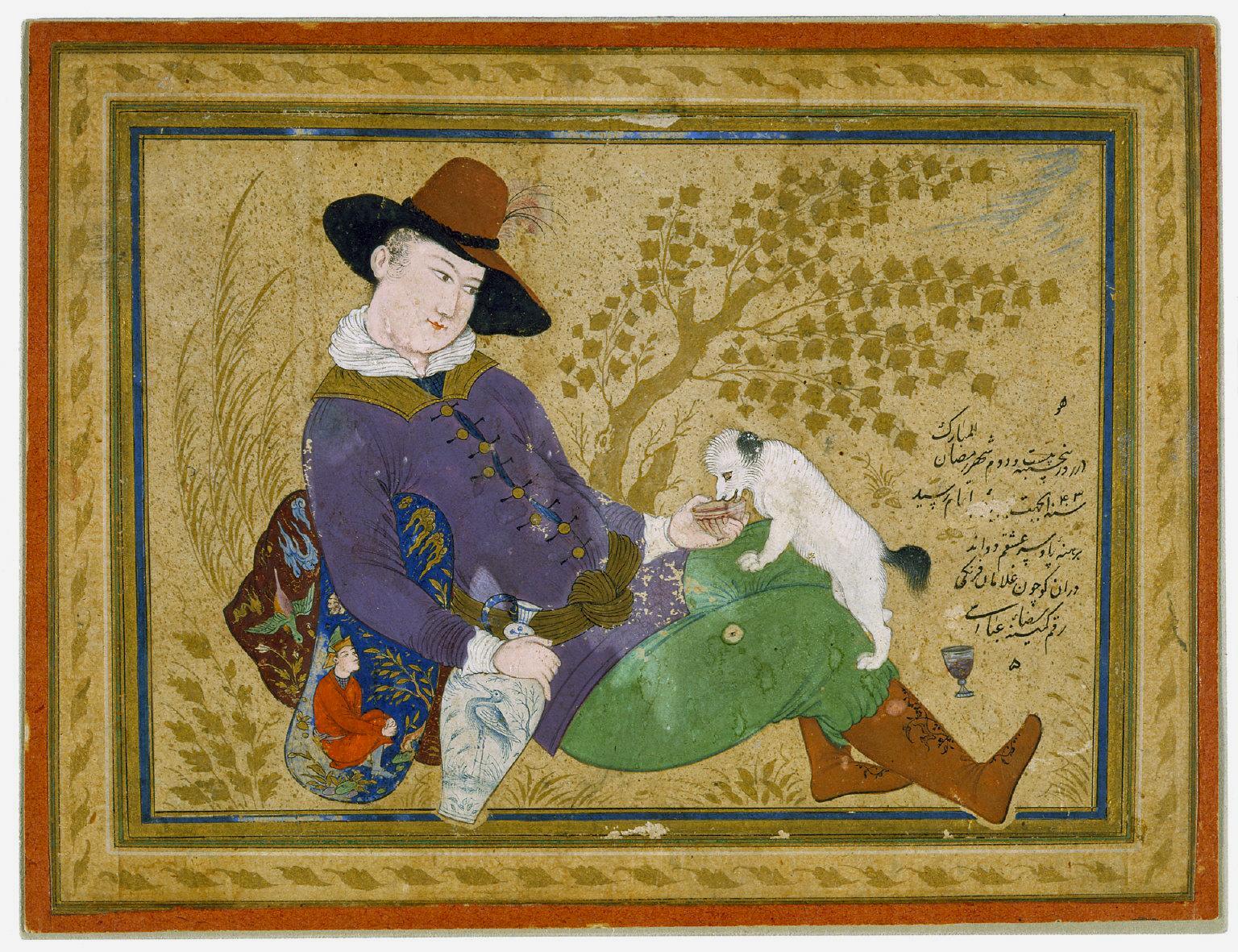
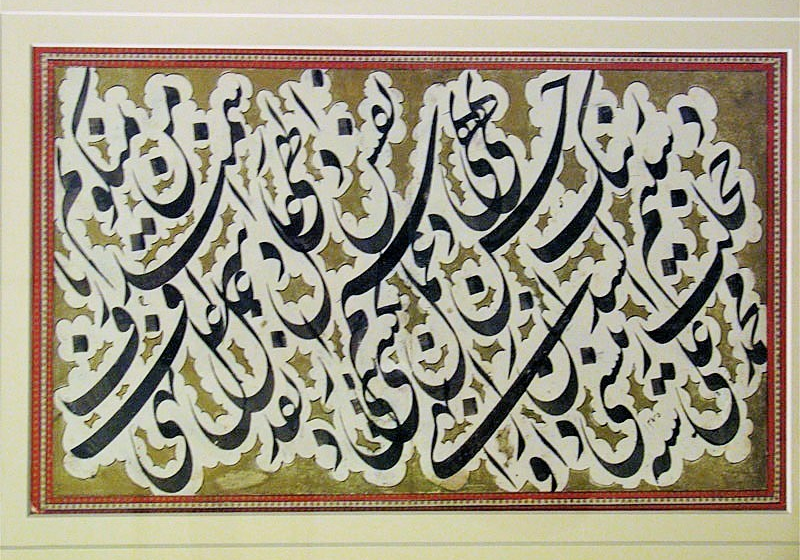
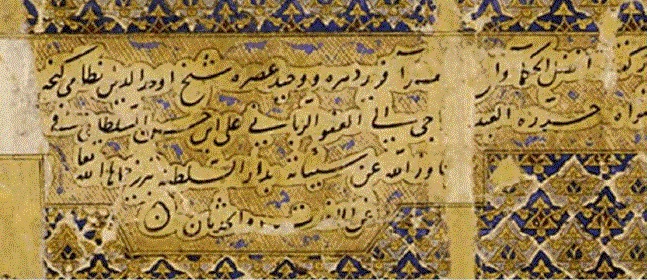
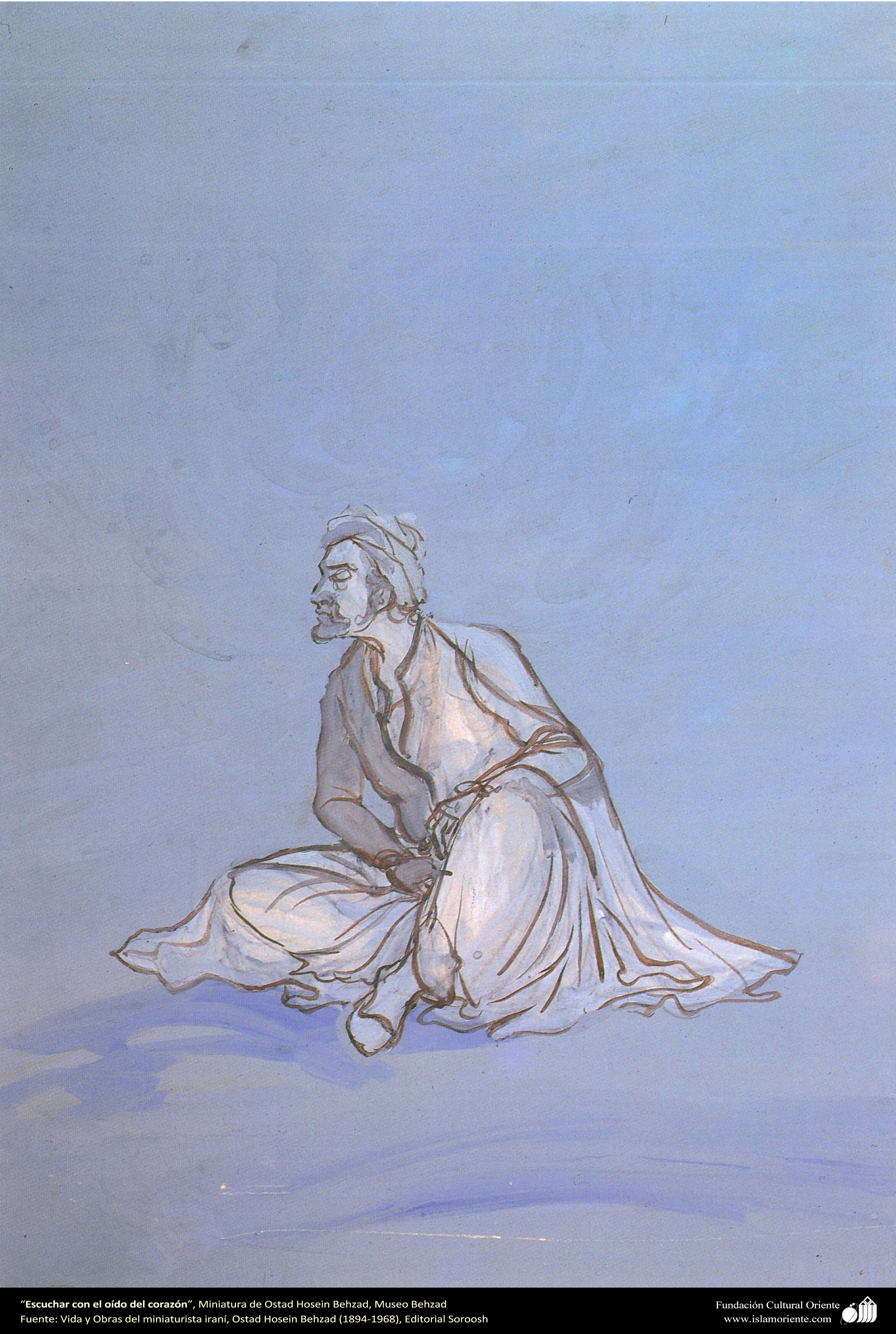
.jpg)
